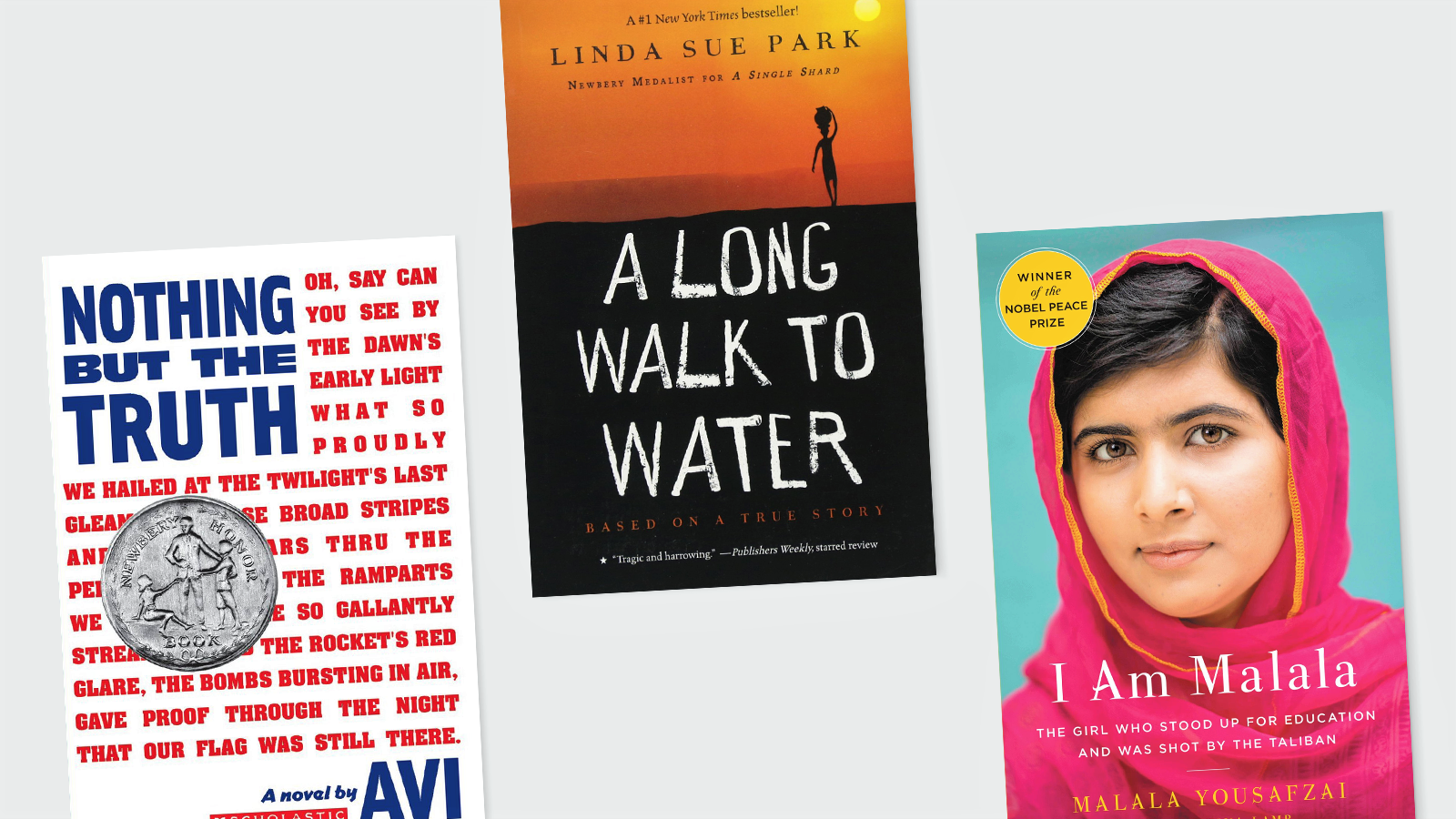
My last post was about quality novels to teach in the American history classroom. I would like to follow it up with some books teachers can include in their geography and civics class. In Alabama, we devote a semester each to geography and civics during the seventh grade. Often, it can seem that there is not enough time to fit in everything that we need to cover during that time frame. However, the following books are short enough to read in these classes, but “pack a punch” of information.
1. Nothing But the Truth, by Avi 
Subject: Civics
Topics: Free speech, 1st Amendment rights, mass media
This novel employs a variety of documents to present its story. Throughout, students read news articles, memos, diary entries, conversations, and other artifacts to piece together the story of Philip Malloy and Ms. Margaret Narwin. The two characters get pushed into the national spotlight after an incident occurs at school. This book generates a lot of great discussions around free speech and its limits, as well as the media and the information they share with the public.
2. A Long Walk to Water, by Linda Sue Park
Subject: Geography
Topics: African culture, the environment, population distribution, effects of political issues in a region (and so many others)
This book has easily become one of my favorites to teach. When I first read it, I flew through it in one day. Salva Dut’s story, as he leaves his war-torn home of Sudan and immigrates to the United States, is one that will continue to inspire students. I like to point out to students that Salva is around their age when he is forced to leave Sudan and go through inconceivable horrors. It gets students to really take the novel seriously and see Salva as an inspiration. There are so many resources out there to accompany this book, but the book alone can lead to meaningful discussions about the Sudanese Civil Wars, the Lost Boys, tribes, and the geography of Africa.
3. I Am Malala, by Malala Yousafzai 
Subject: Geography (or global issues)
Topics: Religion, global issues, culture, war, education
I read this book with my girls’ book club last year, and I’m so glad I did! Ideally, I would read it with my class as well because it’s that important. I think by now most everyone knows the story of Malala and how she was, and continues to be, targeted by the Taliban. However, the book goes into more detail about her fight for education, especially for young girls. Students will come away with an understanding of how much of a privilege an education is and why they shouldn’t take it for granted. Discussions can center around Islam, the Taliban, Western/modern versus Eastern ways of life, and educational freedom. I recommend the Young Readers’ version for middle school students. It is a bit longer to read than the other two books, but so worth it!
To incorporate these stories into your curriculum, start with a teacher-guided class read-along. I like for my students to hear the text read aloud so they hear how to correctly pronounce words and read complex sentences. Then, I can easily segue into discussions and activities related to the book. Plus, I can teach reading comprehension strategies as we read together. Sometimes I will have them read silently to themselves, but I feel this makes it more difficult to segue to other activities because each student reads at a different pace.
What are your favorite book recommendations for civics or geography classes? Comment below!
Discover more civics and geography resources for middle school students with Active Classroom
Jessica Hayes has been teaching for five years. She completed a bachelors’ degree in Social Science Education at Auburn University in 2009, and a master’s degree in English Education from Jacksonville State University in 2014. Recently, she has received her Instructional Leadership certificate. In her work as a certified trainer for Active Classroom, she builds curriculum maps and trains educators on using the program. In her spare time, she loves reading and learning new technology/productivity skills.
